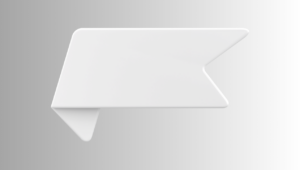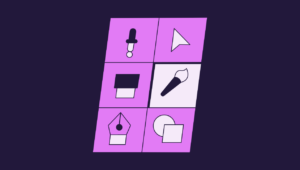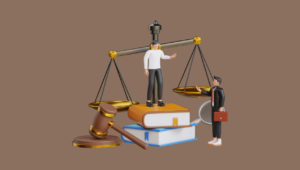In the vast realm of digital creation, the distinction between web design and web development often seems blurred. Especially to those new to the industry. This article delves deep into the contrasting roles of web designers and web developers, elucidating their responsibilities, skills, and the symbiosis that binds them in the world of web creation. Understanding the disparities and synergies between these two domains is crucial for aspiring professionals, recruiters, and anyone involved in creating digital experiences. In this article, we’ll be exploring the key differences between a web designer vs. a web developer, roles, tools, and comparing skills.
Web Designer: The Artisan of the Web
Role and Responsibilities:
Web designers are akin to architects of the online world, focusing predominantly on a website’s visual aesthetics and user experience. Their paramount concern is crafting interfaces that are intuitive, engaging, and user-friendly. Their responsibilities include:
- Creating Layouts and Visuals: Designing the overall look, color schemes, images, and typography.
- User Experience Design (UX): Ensuring a seamless and user-centric experience through intuitive navigation and interaction.
- User Interface Design (UI): Crafting visually appealing and functional interfaces to enhance user interaction.
- Responsive Design: Creating adaptable designs that provide optimal viewing experiences across various devices.
Required Skills:
Web designers should possess a strong aesthetic sense. An eye for detail, and proficiency in design tools like Adobe Photoshop, Illustrator, and Sketch. Knowledge of wireframing tools like Balsamiq and UX design tools like InVision is also crucial.
Web Developer: The Builder of the Web
Role and Responsibilities: Differences of a Designer and a Developer

Web developers, on the other hand, act as the builders who translate the designer’s vision into a functional website. They are responsible for constructing the core structure and functionality of a site. Using coding languages such as HTML, CSS, and JavaScript. Their duties involve:
- Frontend Development: Implementing visual elements that users interact with, ensuring that the designer’s vision is fully realized.
- Backend Development: Working on server-side operations, databases, and application logic, providing the backbone to frontend functionalities.
- Testing and Debugging: Identifying and fixing bugs, ensuring the seamless functioning of the website.
- Maintaining and Updating: Regularly optimizing and updating the website to incorporate new features and address issues.
Required Skills:
Web developers should have proficiency in programming languages like HTML, CSS, JavaScript, and possibly Python, Ruby, or PHP. A strong understanding of web frameworks, databases, and web architecture is also essential. Keep reading to exploring the key differences between a web designer vs. a web developer. Including roles, tools, responsibilities, and skills.
The Symbiosis: Collaboration Between Design and Development
While distinct in their roles. Web designers and developers must work in harmony to create cohesive. So, compelling digital experiences exploring the web developer and designer roles.
Effective collaboration is built on clear communication, mutual respect for each other’s expertise. So, a shared vision for the end product. Regular interactions, feedback sessions, and a joint effort in problem-solving. All are pivotal in ensuring the seamless integration of design and functionality.
SEO Considerations in Design and Development: Differences
To optimize the web creation process for search engines, both designers and developers should incorporate SEO-friendly practices. Designers can contribute by creating user-friendly and visually appealing layouts, optimizing images, and ensuring mobile responsiveness.
Developers, on the other hand, should focus on clean and efficient coding, optimizing website speed, and implementing SEO-friendly URLs and proper tagging.
Elaborating the Symbiosis: Mutual Respect and Understanding: Differences Between Designer Developer
To further enhance the exploration into the cooperative spirit required between designers and developers, it is pivotal to accentuate the necessity for mutual respect and understanding. The collaboration should not only be technical but also creative.
Designers can provide insights into user behavior and preferences, while developers can offer solutions to implement complex functionalities, ensuring that the final product is not just visually appealing but also highly functional and efficient. Keep reading to exploring the key differences between a web designer vs. a web developer, including roles, tools, responsibilities, and skills.
The Creative Process:
The Designer’s Vision: Web Designer Roles
Web designers commence the creative process by generating concepts and mockups, often using tools such as Adobe XD or Figma to create high-fidelity prototypes. These initial designs act as the blueprint for the website, setting the tone for the user experience and visual aesthetics. The designer’s role is to ensure that every visual element aligns with the project’s goals and enhances user engagement and satisfaction.
The Developer’s Execution: Web Developer Roles
Once the design is finalized, developers step in to transform these static designs into dynamic, interactive experiences. They work meticulously, writing thousands of lines of code, testing, debugging, and optimizing to ensure that every feature works seamlessly. Keep reading to exploring the key differences between a web designer vs. a web developer, including rules, tools, responsibilities, and skills.
Their analytical and problem-solving skills are crucial at this stage, enabling them to overcome technical challenges and implement the designer’s vision accurately.
The Importance of Clear Communication:
Effective and continuous communication is the linchpin in the symbiotic relationship between designers and developers. Regular meetings, constructive feedback, and a willingness to understand each other’s perspectives and constraints are crucial. Through open dialogues, both parties can align their goals, resolve disagreements, and find the best solutions to create a cohesive and user-friendly product.
Adapting and Evolving:
In the ever-evolving landscape of web technologies, both designers and developers must stay abreast of the latest trends and advancements comparing designer and developer skills. Continuous learning and adaptation are essential to incorporate new tools, techniques, and best practices, ensuring the creation of innovative and state-of-the-art digital experiences.
Balancing Functionality and Aesthetics: Differences Between Designer Developer

The pursuit of balance between functionality and aesthetics is a constant endeavor in web creation. Designers and developers must work together to ensure that the visual elements do not compromise the website’s performance and vice versa. This balance is crucial for user satisfaction, as a website that looks stunning but performs poorly, or one that is highly functional but visually unappealing, can lead to user frustration and abandonment.
Conclusion: Differences Between Designer Developer
The distinction between web design and web development is crucial in understanding the multifaceted nature of website creation. Web designers, with their aesthetic prowess and user-centric approach, craft the visual and experiential aspects of a website. In contrast, web developers bring these visions to life, constructing a fully functional and seamless user experience.
While their roles and skills may differ, the successful realization of a digital project hinges on the symbiotic relationship between design and development, marked by effective communication, collaboration, and a shared commitment to creating engaging and impactful online experiences. I hope that this guide helps you comparing designer and developer skills.








